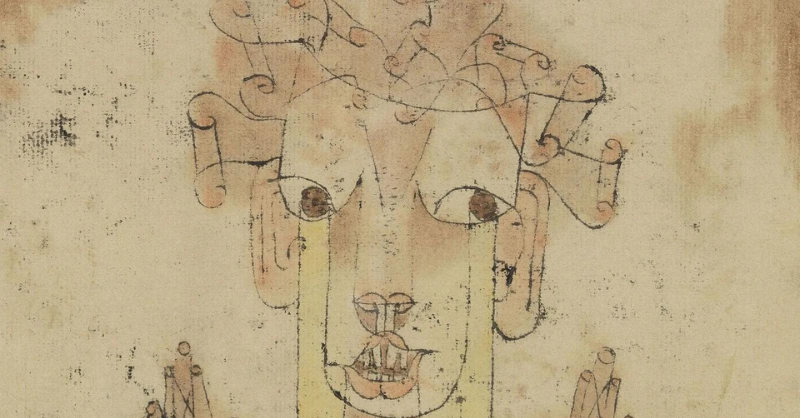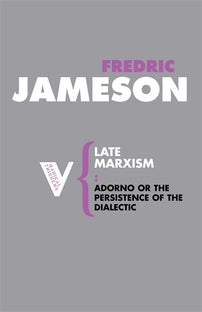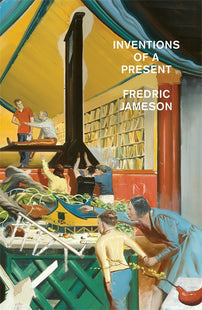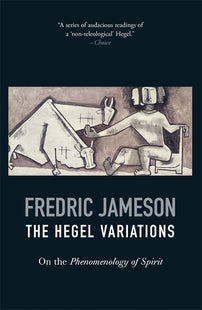Magisterial Figurations
For the final instalment of our Jameson at 90 series, Brittany Murray reflects on Fredric Jameson's The Benjamin Files.

Jameson begins The Benjamin Files with a deceptively simple image. The dialectician is on a boat. Her job is to catch the “winds of history”, and her words are the sails. It sounds easy enough unless, as Jameson points out, you have ever tried to write about history (my efforts produce great difficulty and uneven results) or sail a boat (nope). The currents, winds, navigation, weather conditions, and the coordination of booms and masts render sailing rather complicated. It is hard to catch the wind just right.
Jameson’s final chapter also tarries with a Benjaminian image of the winds of history. This one is the famous Angel of History passage, based on Paul Klee’s etching. Benjamin’s reading is well-known—the Angel is turned toward the present, a fragmented wreckage of past catastrophes. He would like to help, but his wings are immobilized by a strong wind that pushes him toward a future to which his back is turned. Another image, striking and seemingly simple, except for the detail, as Jameson points out, that the wind—the immobilizing one--is blowing from a place called Paradise or Progress, not towards it. Jameson reads the image for insight into Historicity and weak Messianism in a time of grave danger. Proceed carefully, because the Angel of History himself is caught up, as Jameson phrases it, “held open like an umbrella broken in a storm” (189). I have been there, inverted umbrella stuck in the gust. Jameson’s gentle retort: “This particular angel has been remarkably maladroit and has failed to reckon with the winds of a storm. Whose fault is that?” (169).
[book-strip index="1"]
I will get to the winds of history in a moment. Before that, a discussion of the importance that Jameson places on figuration. To get to Benjamin’s thoughts on history, Jameson grapples with a series of Benjaminian images. The present can feel intoxicating, with minutes like “cheap liquor” that make you “tipsy with time” (94). Or, the present can feel like an impasse, and yet “boredom is the dream bird that hatches the egg of experience” (95). Within this forcefield, Jameson transforms other philosophers of history into figural writers too. Take Brecht, for instance, on the value of experiences, which should not freeze into rigid judgment; rather, the former should be treated like snowballs: “They can be good weapons, but you can’t keep them that long. They also don’t survive, for example, in the pocket” (64).
Throughout the book, Jameson offers his own magisterial figurations. One-Way Street, Benjamin’s study of late Weimar culture, is, per Jameson, “a box of chocolates that should bear the warning: addictive substances!” (48). Jameson uses this image to describe the structure of Benjamin’s book, which he argues, would be incorrectly described as fragments, aphorisms, or observations. Each paragraph, instead, is a tiny aesthetic whole, sealed off with its own title. The procedure is “the definitive sentence,” by which he means, “the nonconceptual yet figural formulation which rounds the words off and makes them complete.” The addictive part, though, is the absences—the gaps between paragraphs and the inner gaps or discontinuities within each word-image. And with that, you have a working dialectical assemblage--what is there, what’s not there, what is missing inside of what is there, and the appetite for more.
[book-strip index="2"]
Here is another beautiful figuration from Jameson, this time intended to distinguish dialectical engagement with the past from the citation of dead styles. The former looks like astronavigation, judging “whether we are not again in just such a period, which harmonizes with these stars realigned and which demands that we rethink our own ontology of the present” (55). The latter looks like grave robbery, an “archeological expedition into a vanished past, more closely resembling the now-sealed tomb of the tragic.” (55) Elsewhere, Jameson has called this the distinction between genuine historicity and pastiche.
The more formal name for this engagement, about how these stars realigned and what they ask of us, is the “dialectical image.” Jameson revisits this formulation throughout the book, and the final chapter devotes attention to articulating its meaning. The idea is that the dialectical image is a three-term structure. There is the past, the present, and then, by their juxtaposition, a third term—a new understanding created by the proximity of the first two. What animates past and present, what makes the juxtaposition vibrate with urgency, is a crisis yet to be addressed, an unresolved problem that demands attention.
[book-strip index="3"]
This gloss on the dialectical image represents Jameson’s approach to futurity, or the question of Messianism in Benjamin. Each historical moment, or constellation, is always incomplete, unresolved, unburied, unjust, a debt unpaid. The future will, if not redeem, then at least re-enact or realize the past’s unmet catastrophe. Here is an important point gleaned from Jameson—though his term is the “dialectical image”, this delayed realization is not simply symbolic. It is as real as the pain we inherit from the incomplete past. He cites a formula for this idea: the “past cannot be altered, every generation changes it” (177). The first clause clarifies what will not change the past – denial or whitewashing. The second clause holds open the door that might lead from past to future – real actions, as real as the courage to put skin in the game. I do not yet understand, as Jameson seems to, how the future could ever fulfill or redeem the historical catastrophe that the angel of history saw. I want to, though.
See all works by Fredric Jameson here. His new book, Inventions of a Present: The Novel in its Crisis of Globalization is out on May 7.
[book-strip index="4"]





